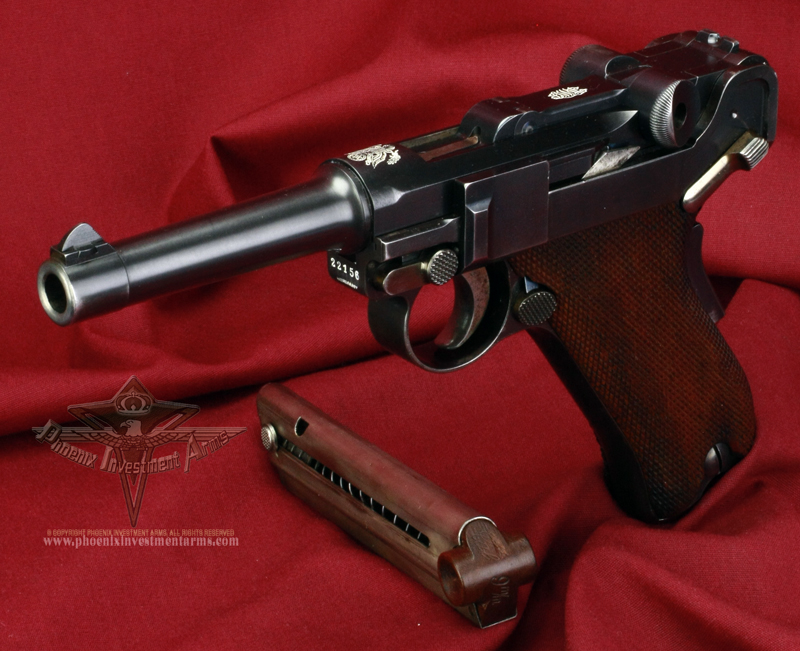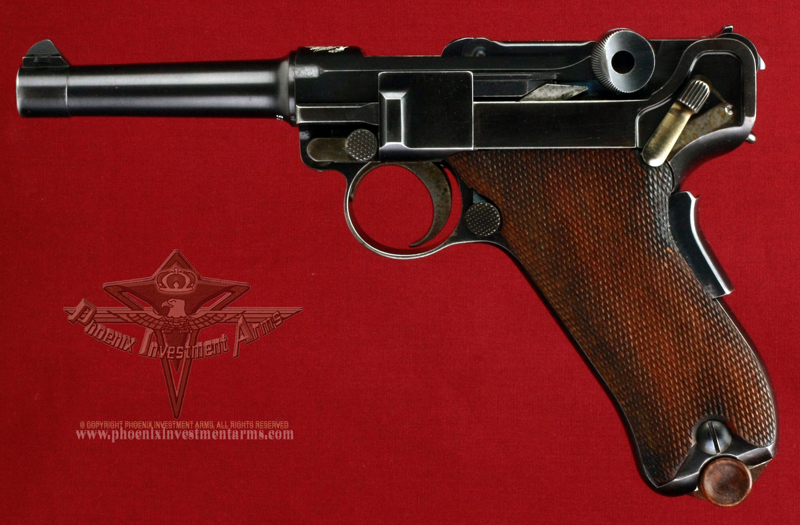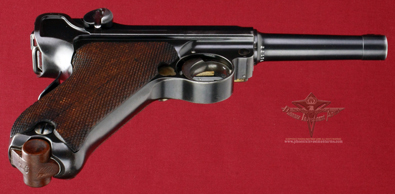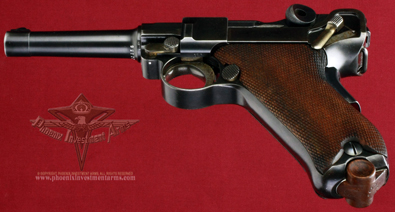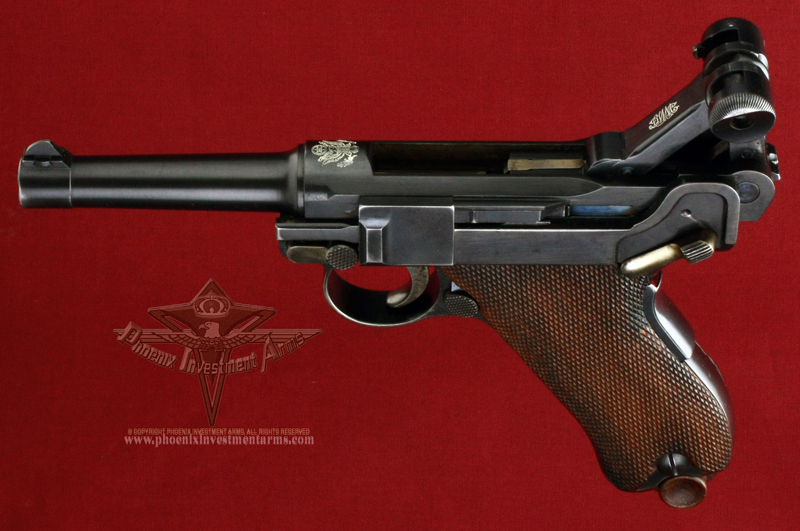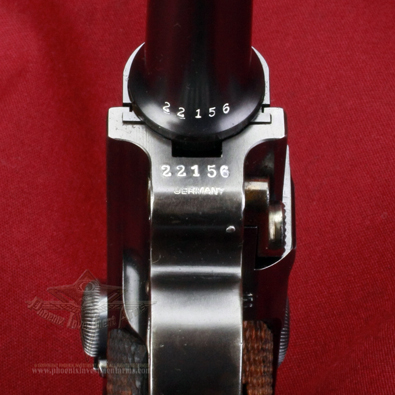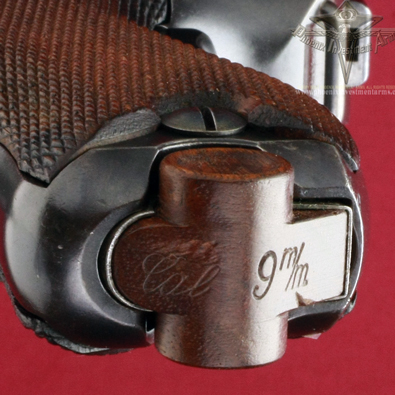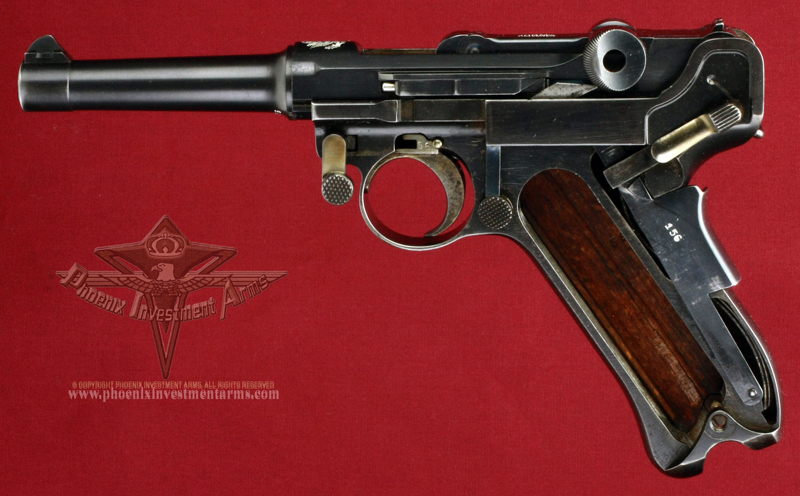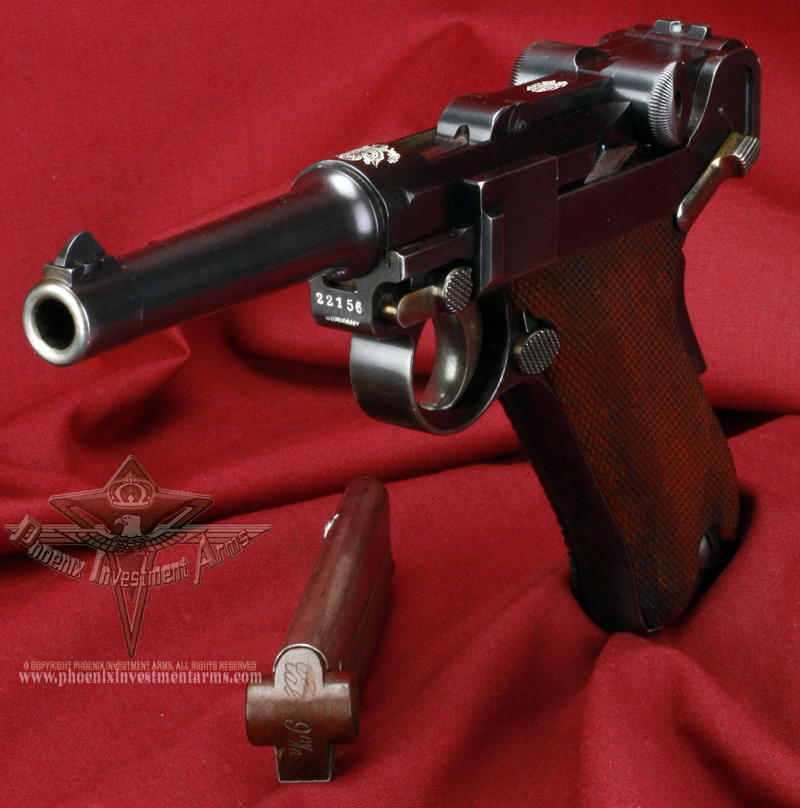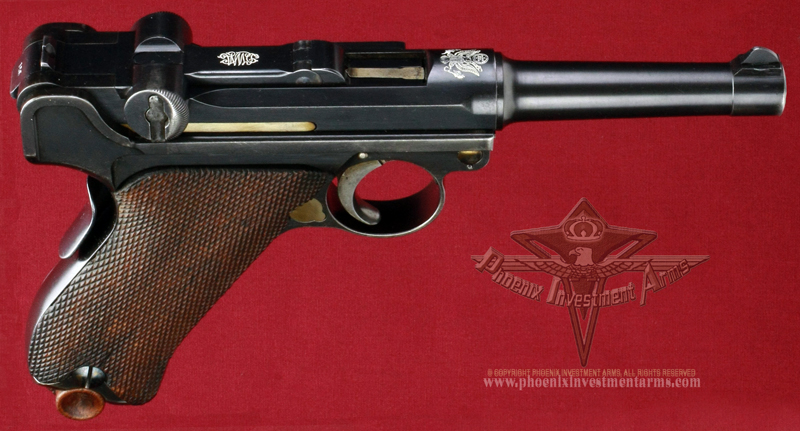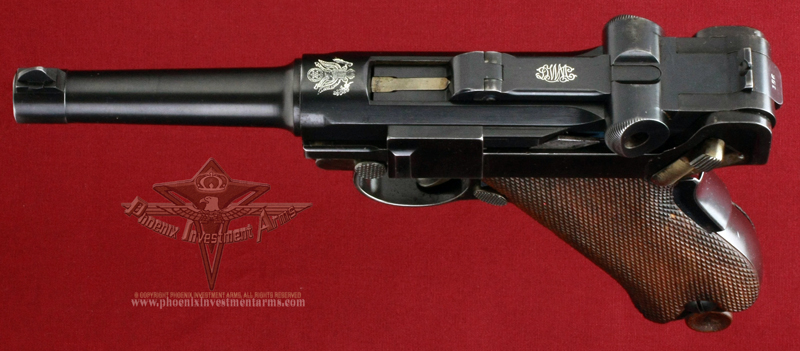|
 |
|
One is first impressed with the thick 9mm
barrel, 4" (100mm) in length. There are very few of the 'fat' barrels
in existence and this one is recognized with the 22156 serial number
placing it's production in 1902.
|
|
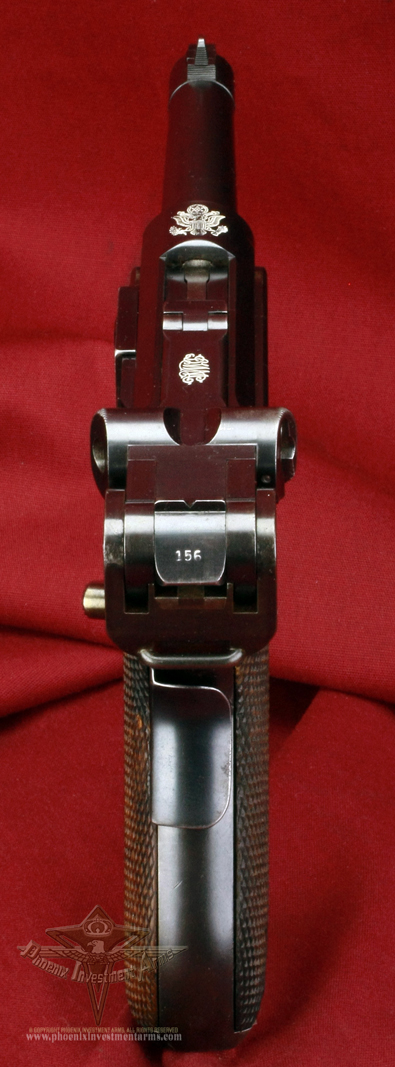 |
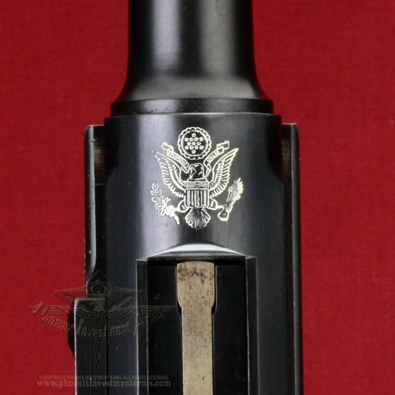 |
|
The American Eagle was
an advertising medium employed by DWM. It began with the Swiss first
models when they engraved the Cross and Sunburst on the Swiss guns. The
Swiss were overcome by this so when DWM sought the American contract
they used the Great Seal of The United States over the chamber. This
began the American Eagle series. |
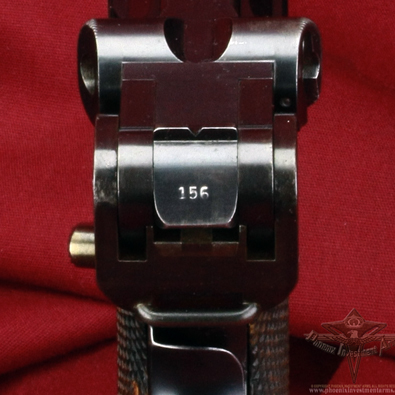 |
|
In 1902 some
models showed the three digit serial numbers on the small parts.
By 1903 this practice was discontinued and there were no 120mm 7.65mm
Parabellums produced. Also of note is the wide squeeze grip safety
which was eventually phased out. |
|
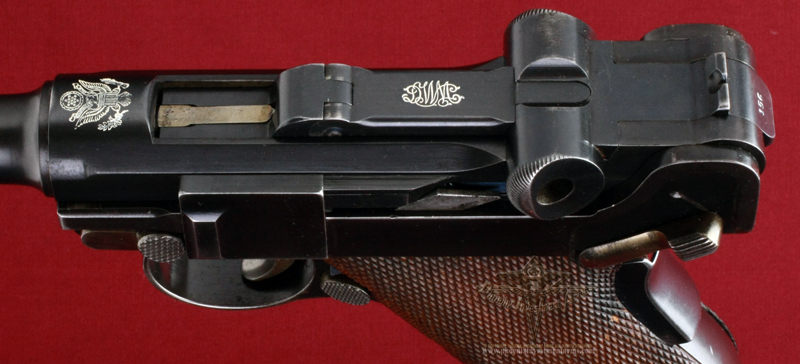 |
|
Serial number placement is in the
commercial "hidden" style; displayed on the bottom the side plate, the and locking bolt, the front of the frame, under the
barrel, and on the side of the trigger.
This example has
all matching numbers. There are no usual proof marks found on other
guns of this period and represents a very clean pristine look to enhance
the beauty of the gun. |
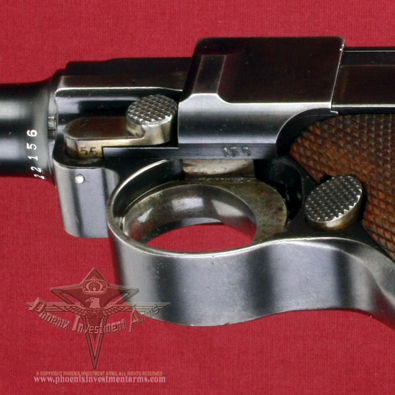 |
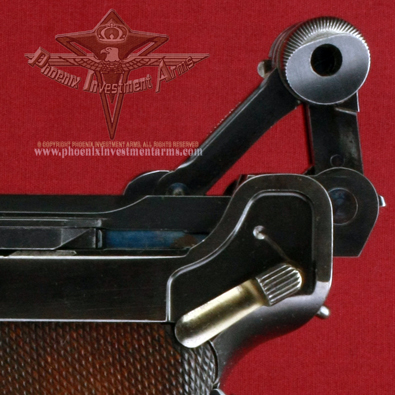 |
|
Above Left: The Wide trigger guard, the
commercial hidden serial numbers under the locking lever and three
digits on the bottom of the side plate. Above Right: The 1902 in
full recoil. |
|
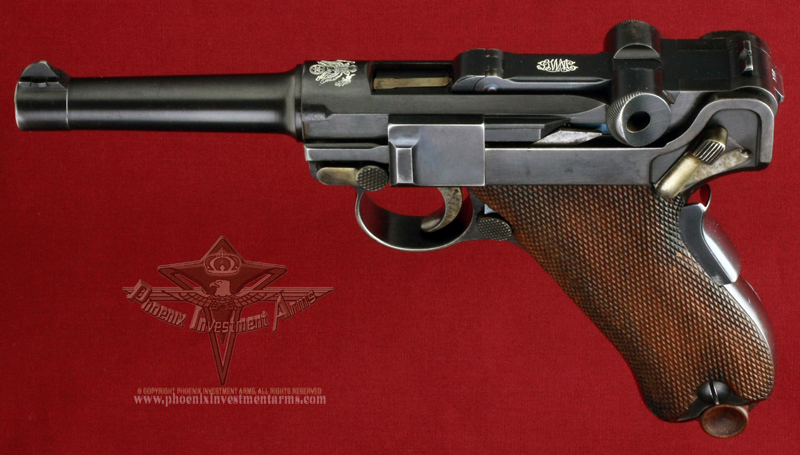 |
|
The Original Model Frame has the wide
trigger guard (15mm) and the gun is machined to accept the leaf
recoil spring. Note how the receiver is curved at the top of the rear
portion of the receiver ring and not cut away for the extractor as in the
new model receiver. These models had the long sear and no visible numbers
on the squeeze grip safety stop. |
|
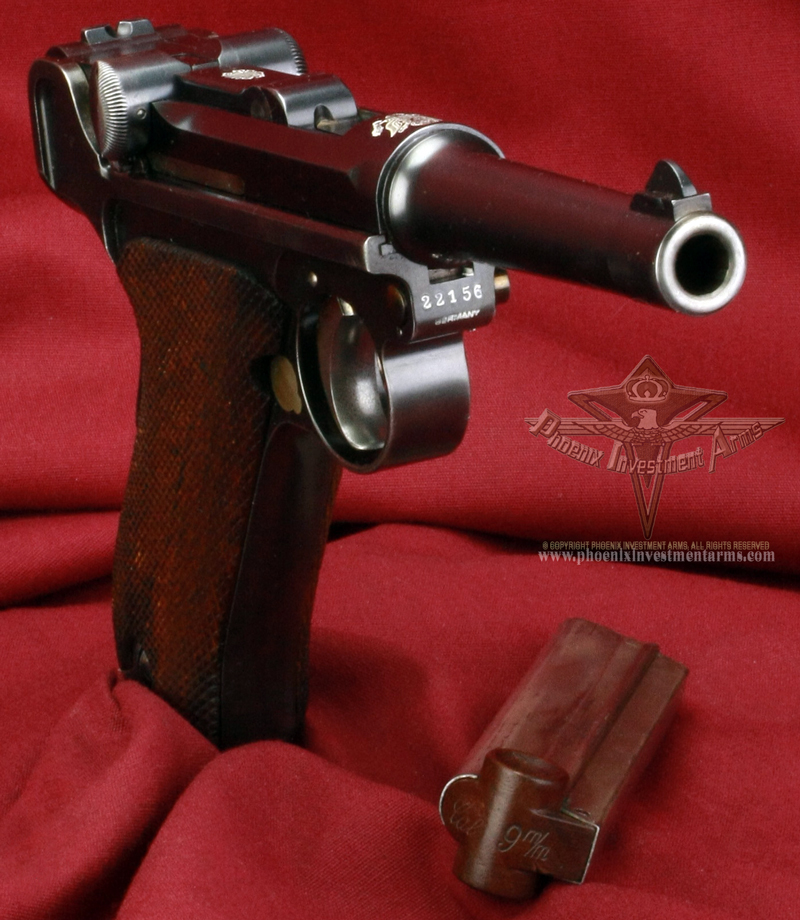 |
|
This 1902-03
Model "Fat Barrel" Luger is characterized by the 9mm 4" (100mm)
thick barrel, the
rear "V" cut fixed and front dovetailed sight and the old short frame,
short receivers without
a the stock
lug. This 9mm model of the Luger
was produced from September to December 1902 for export sales in the
22999 serial numbers. 1903 Serial numbers were between 23000-23999.
Serial number recordings appears to support that the "fat barrels" were made in two
batches as the "Commercial Fat Barrel" appears within the number range.
|

